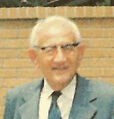Template:Selected anniversaries/September 7: Difference between revisions
No edit summary |
No edit summary |
||
| Line 16: | Line 16: | ||
||1829 – August Kekulé, German chemist and academic (d. 1896) Friedrich August Kekulé, later Friedrich August Kekule von Stradonitz (German: [ˈfriːdrɪç ˈaʊɡʊst ˈkekuːle fɔn ʃtraˈdoːnɪts]; 7 September 1829 – 13 July 1896), was a German organic chemist. From the 1850s until his death, Kekulé was one of the most prominent chemists in Europe, especially in theoretical chemistry. He was the principal founder of the theory of chemical structure. | ||1829 – August Kekulé, German chemist and academic (d. 1896) Friedrich August Kekulé, later Friedrich August Kekule von Stradonitz (German: [ˈfriːdrɪç ˈaʊɡʊst ˈkekuːle fɔn ʃtraˈdoːnɪts]; 7 September 1829 – 13 July 1896), was a German organic chemist. From the 1850s until his death, Kekulé was one of the most prominent chemists in Europe, especially in theoretical chemistry. He was the principal founder of the theory of chemical structure. | ||
||1836 – August Toepler, German physicist and academic (d. 1912) | ||1836 – August Toepler, German physicist and academic (d. 1912). Pic. | ||
||Charles Romley Alder Wright FCS, FRS (b. 7 September 1844) was an English chemistry and physics researcher | ||Charles Romley Alder Wright FCS, FRS (b. 7 September 1844) was an English chemistry and physics researcher | ||
||Georges Jean Marie Valiron (7 September 1884) was a French mathematician, notable for his contributions to analysis, in particular, the asymptotic | ||Georges Jean Marie Valiron (7 September 1884) was a French mathematician, notable for his contributions to analysis, in particular, the asymptotic behavior of entire functions of finite order and Tauberian theorems. | ||
||Karl Walter Schröter (b. 7 September 1905) was a German mathematician and logician. Later on, after the war, he made important contributions concerning semantic consequences (German: semantische Folgerungsrelationen) and provability logic (German: syntaktische Ableitbarkeitsrelationen). | ||Karl Walter Schröter (b. 7 September 1905) was a German mathematician and logician. Later on, after the war, he made important contributions concerning semantic consequences (German: semantische Folgerungsrelationen) and provability logic (German: syntaktische Ableitbarkeitsrelationen). He worked as a mathematical theoretician and cryptanalyst for the civilian Pers Z S, the cipher bureau of the Foreign Office (German: Auswärtiges Amt), from Spring 1941 to the end of World War II. Pic. | ||
||1909 – Eugène Lefebvre crashes a new French-built Wright biplane during a test flight at Juvisy, south of Paris, becoming the first aviator in the world to lose his life in a powered heavier-than-air craft. | ||1909 – Eugène Lefebvre crashes a new French-built Wright biplane during a test flight at Juvisy, south of Paris, becoming the first aviator in the world to lose his life in a powered heavier-than-air craft. | ||
Revision as of 16:23, 23 March 2018
1914: Physicist and philosopher James Van Allen born. The Van Allen radiation belts will be named after him, following their discovery by his Geiger–Müller tube instruments aboard satellites in 1958.
1926: Steganographic analysis of The Safe-Cracker reveals two terabytes of encrypted data.
1927: The first fully electronic television system is achieved by inventor Philo Farnsworth.
1928: Mathematician and crime-fighter Abraham Fraenkel publishes new class of Gnomon algorithm functions based on axiomatic set theory, which he uses to detect and counteract crimes against mathematical constants.
1985: Mathematician George Pólya dies. He made fundamental contributions to combinatorics, number theory, numerical analysis and probability theory.
2017: Signed first edition of Niles Cartouchian and Egon Rhodomunde Confront Gnotilus sells for two million dollars.





